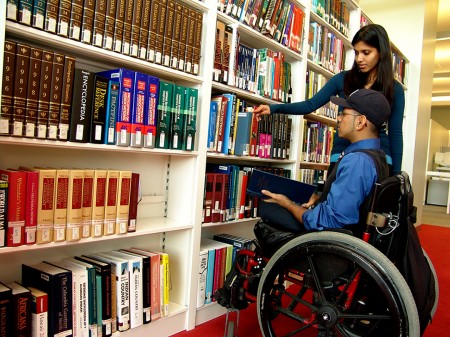- Home
- News
- Features
- Topics
- Labor
- Management
- Opinions/Blogs
- Tools & Resources
Disabled Americans More Likely To Be Unemployed, Paid Less If Working
Disabled Americans are less likely to be employed than individuals without disabilities.
Disabled Americans who are employed typically have jobs with low pay and also earned less than their colleagues with no disability, according to the U.S. Census Bureau’s American Community Survey.
More than half of disabled American workers, 52%, earned less than $25,000 in the previous year, compared with 38% of workers without disabilities.
This translates into an earnings gap where disabled Americans earn about 75% of what workers without disabilities earn.
“Even within the largest occupations, employed workers with disabilities, on average, earned less than similarly employed workers without disabilities,” said Jennifer Cheeseman Day, the assistant chief for employment characteristics in the U.S. Census Bureau’s Social, Economic and Housing Statistics Division.
“Several factors may account for this earnings gap, such as differences in age, work experience, number of hours worked, or other factors. For example, 46% of workers with a disability worked full time, year-round compared with 62% of workers with no disability.”
Disabled Americans More Likely To Be Unemployed
Based on the new Disability Employment Tabulation, the statistics show that between 2008 and 2010, workers without disabilities were about three times more likely to be employed than individuals with disabilities.
Overall, disabled American workers accounted for 9.4 million, or 6%, of the 155.9 million civilian labor force.
More than half of all disabled Americans with jobs are employed in four general occupation groups: service workers (except protective services) with 18.2%, followed by administrative support, 15.1%, sales workers, 10.4%, and management, business and finance, 8.9%.
Among specific occupations, janitors and building cleaners had the highest number of employees with a disability with 315,000, accounting for 11.8% of all janitorial workers.
Drivers/sales workers and truck drivers were the next largest occupations with 263,000 disabled workers. Cashiers with 256,000 and retail salespeople with 223,000 disabled workers, respectively, followed them.
Among occupations with 100,000 or more disabled Americans, dishwashers had the highest disability rate at 14.3%, followed by refuse and recyclable material collectors, 12.7%, personal care aides, 11.9%, and janitors and building cleaners, 11.8%.
“Reliable, accurate data on disability employment is an essential tool for furthering education, research and policy initiatives that improve employment opportunities and outcomes for people with disabilities,” said acting Secretary of Labor Seth D. Harris.
Disability Employment Tabulation now presents in-depth labor force data about disabled Americans, with more details on employment status, occupation, education and earnings.
In addition, the latest tabulation provides information about the labor force across several variables, including, age, sex, race, Hispanic origin, occupation groups, citizenship and earnings by employment status.
Please subscribe to WWOW’s posts by email:[subscribe2]
List your business in the premium web directory for free This website is listed under Human Resources Directory





